Water

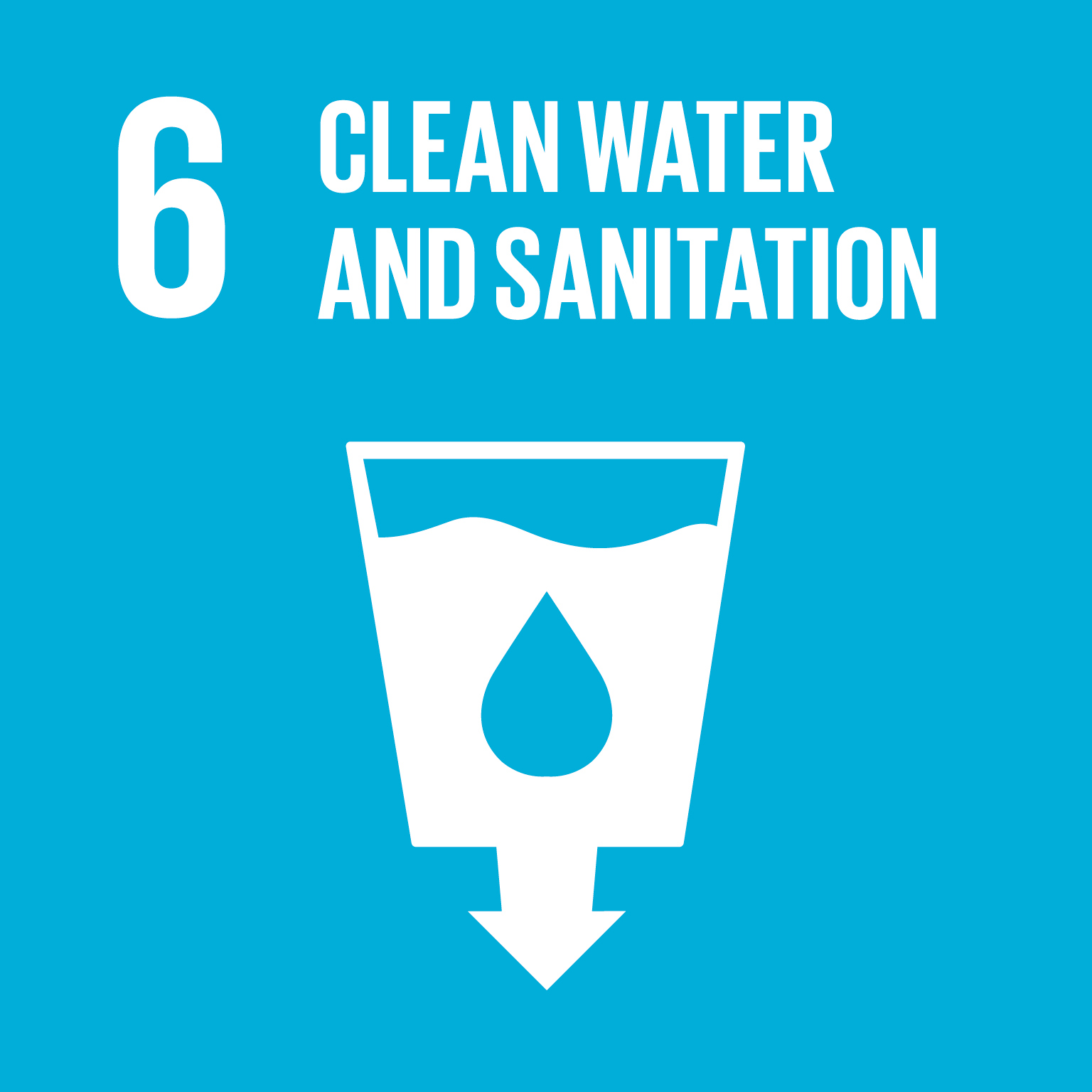
The RMIT Sustainability Policy commits the University to prioritising water and energy efficiency, conservation and education.
The RMIT Design Standards prioritise water efficiency by setting minimum standards for fixtures and fitting, encouraging water management, capture and storage. Water Sensitive Urban Design (WSUD) is a key component of our approach to campus planning and landscape design. WSUD is an approach to planning and designing urban areas to make use of valuable stormwater and rainwater and reduce the harm it causes to our rivers and creeks. WSUD is a key feature of our Bowen Street landscaping, see if you can spot our rain gardens on Bowen Street around the Garden Building.
The University applies water-conscious planting through the selection of drought-tolerant planting in the urban environment. These require minimal water to maintain, reduce the urban heat island effect and provide relaxing areas for our community. RMIT also encourages the use of Indigenous plant species, which are drought-tolerant to minimise water usage.
RMIT has installed over 3,300 water-efficient fixtures and fittings throughout our buildings, including sensor taps, dual-flush toilets, low-flow shower heads and kitchen sprays. Each year as we upgrade and refurbish our spaces, we continue to improve the water efficiency of our fixtures and fittings.
We have installed 40 smart meter devices across our buildings, giving visibility to our water consumption patterns.
We have undertaken major water harvesting initiatives on campus, installing rainwater, greywater, fire water testing reuse storage tanks.
RMIT has a total capacity of 1.3 million litres of on-site storage tanks, reducing requirements for potable water usage.
There are tanks hidden (and not so hidden) all over campus to harvest rainwater. Once successfully captured and stored this water is then typically used for toilet flushing and landscape irrigation applications.
Examples include:
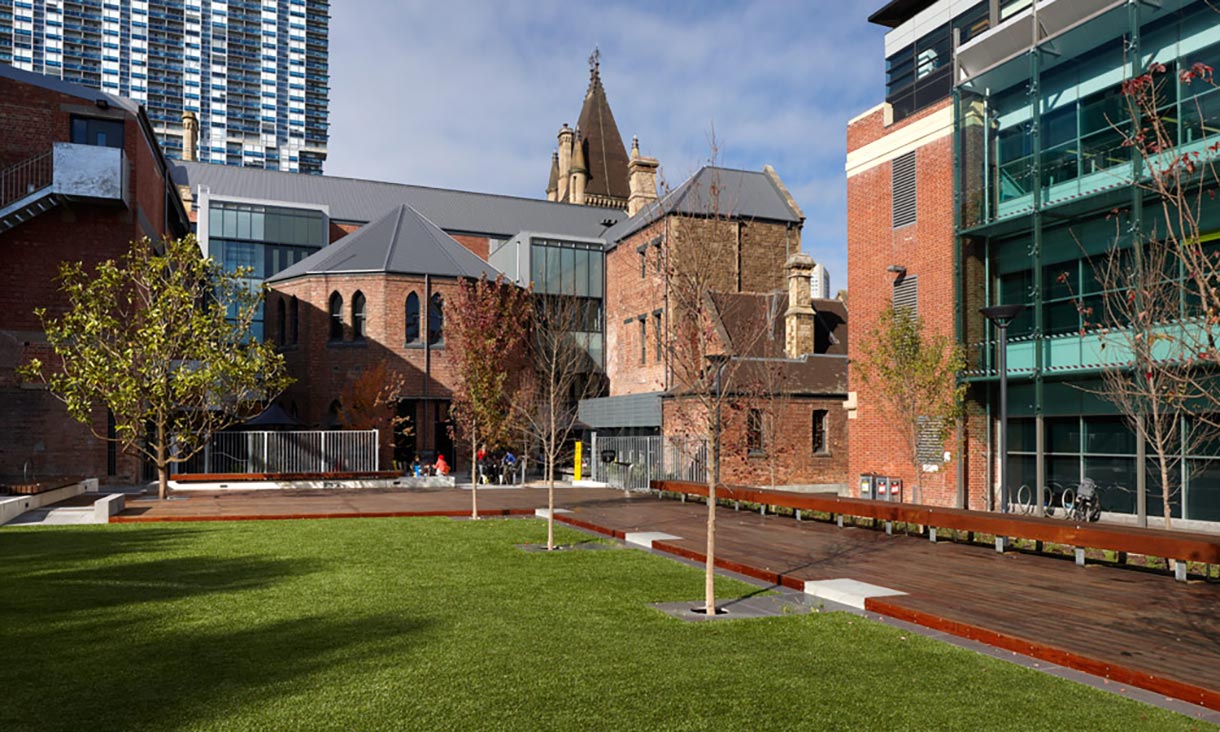 Under the University Lawn (behind Building 1)
Under the University Lawn (behind Building 1)
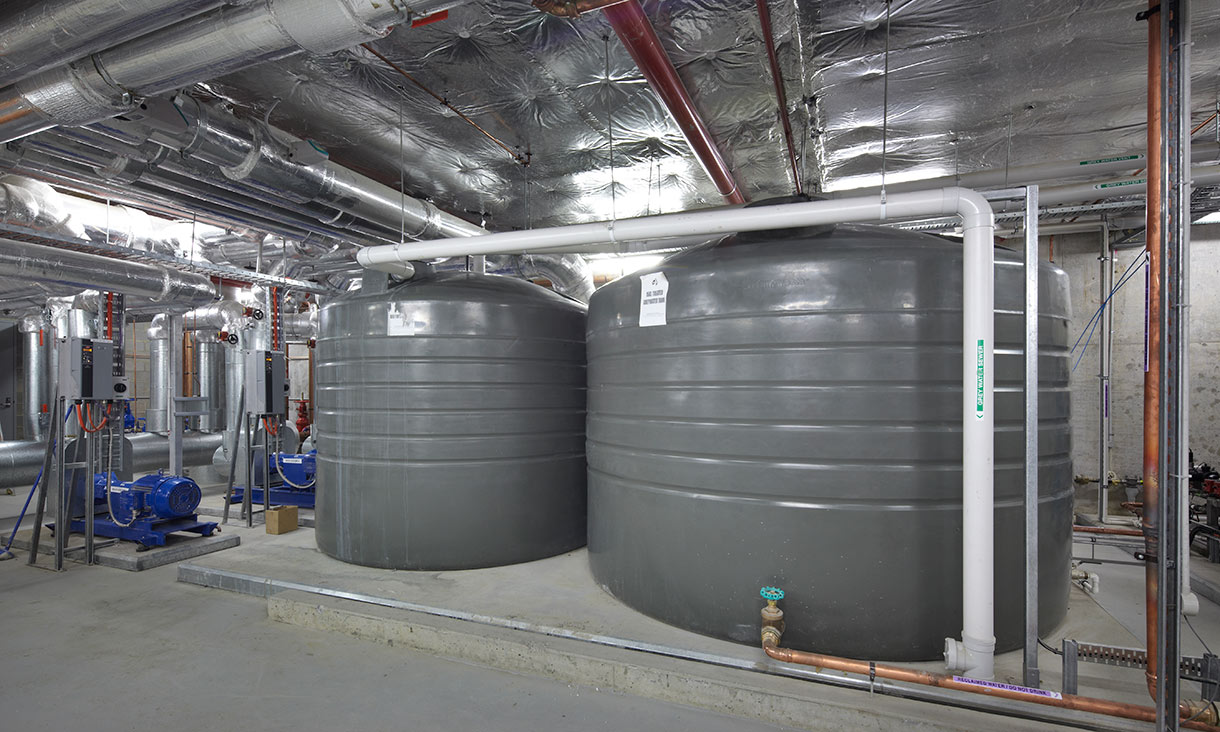 In the basement of Building 80
In the basement of Building 80
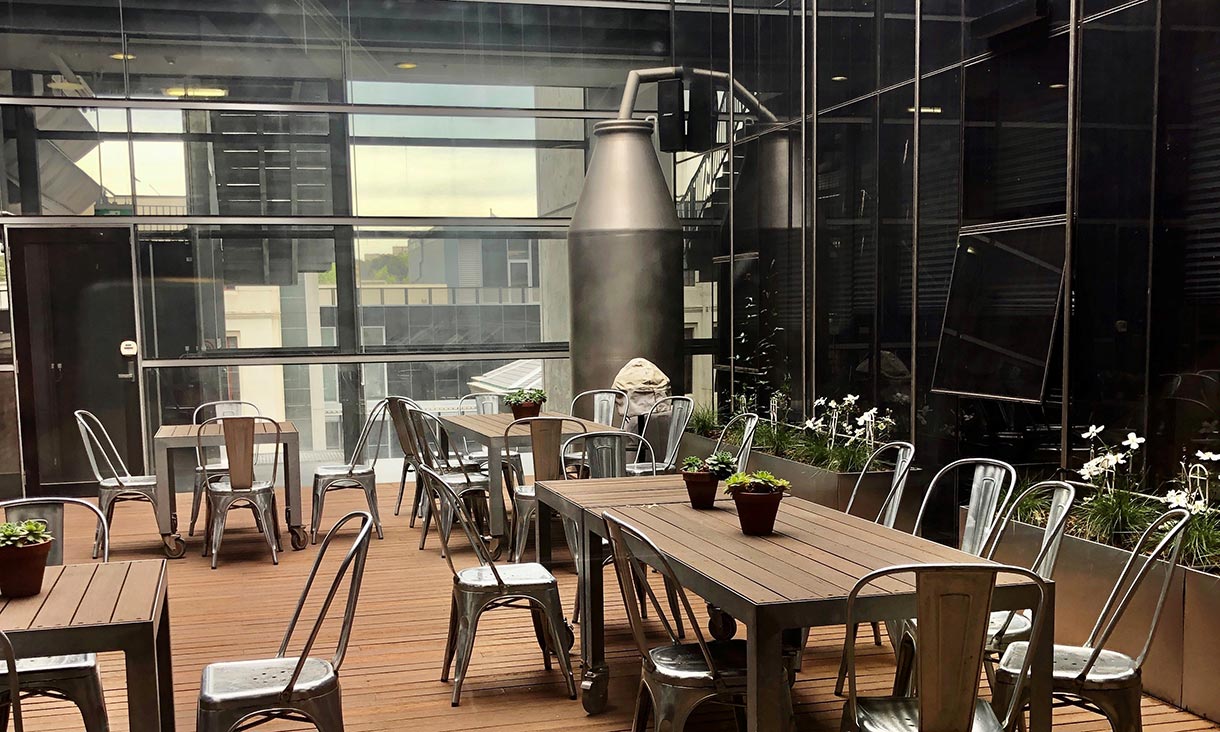 'Milk bottle' water tank, Building 9
'Milk bottle' water tank, Building 9
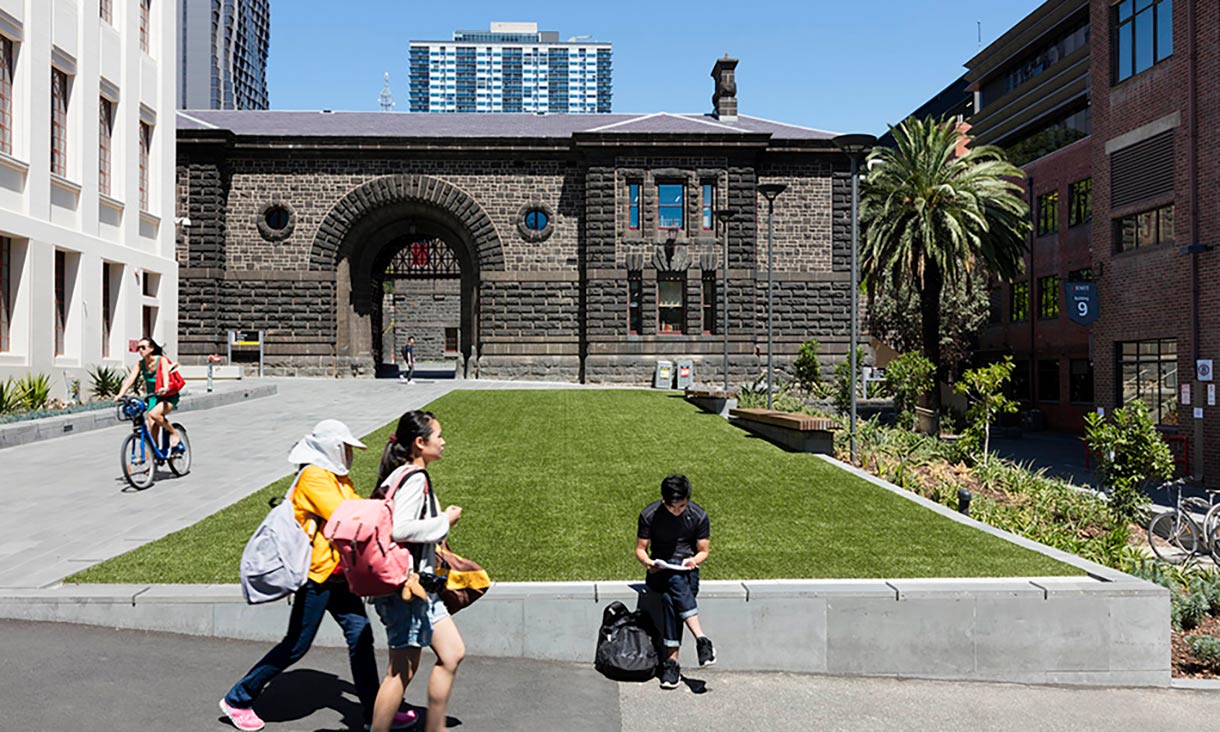 Out the front of Building 11
Out the front of Building 11
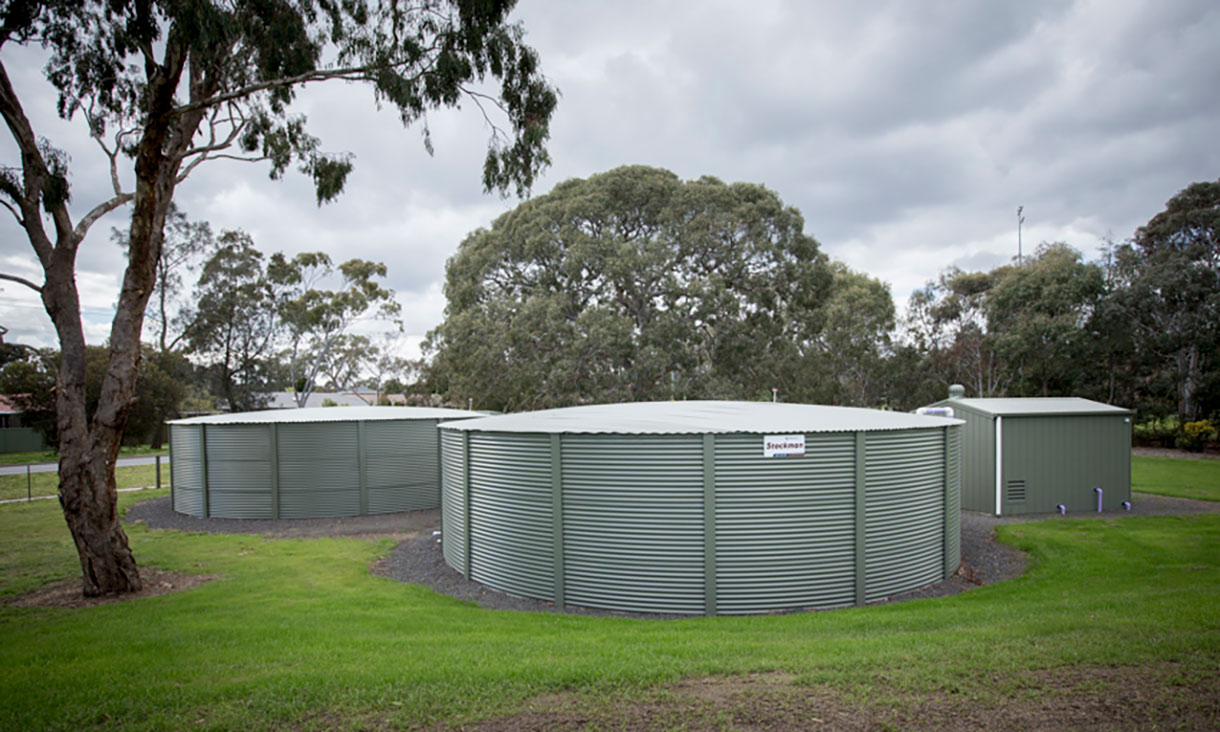 Bundoora West Sports Fields
Bundoora West Sports Fields
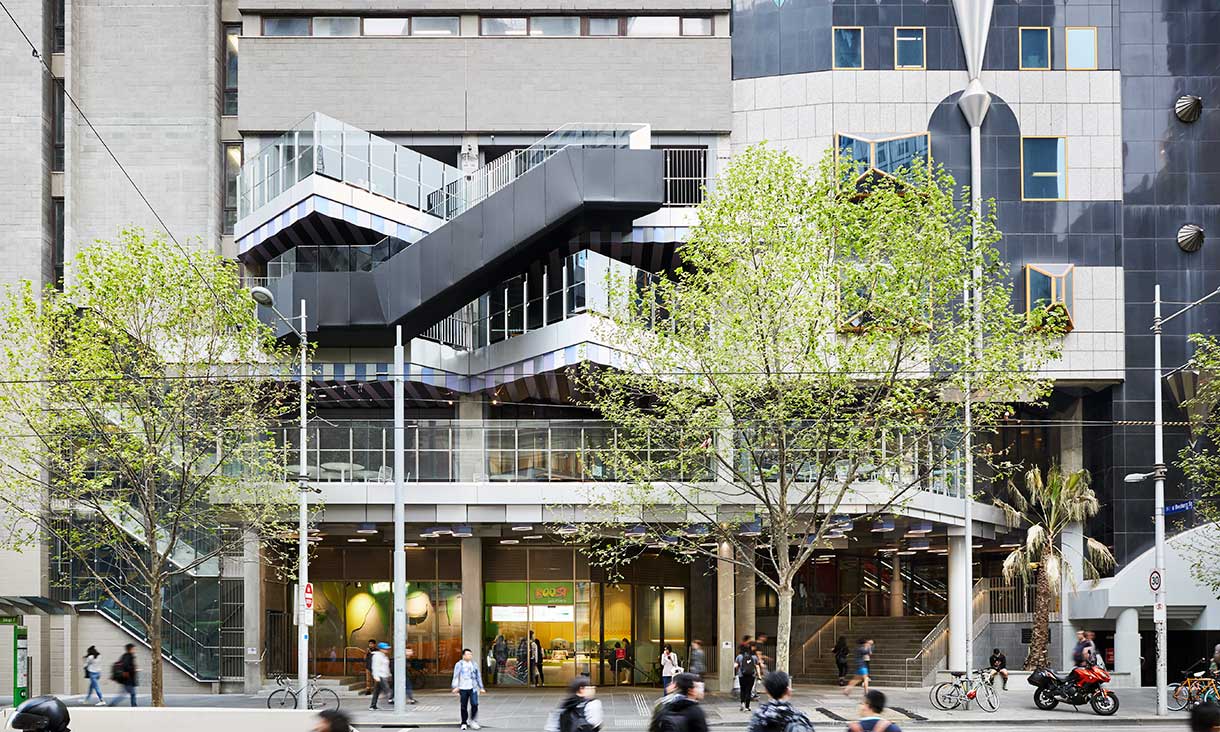 Two old boat testing tanks have been repurposed under Building 10
Two old boat testing tanks have been repurposed under Building 10
Hydration stations and drinking fountains have been installed across our campuses to make it easy to refill your own bottles. Our hydration stations can be found outdoors on our campuses, with drinking fountains in common areas and instant filtered hot/cold water taps found in kitchens/kitchenettes and student break-out spaces. Our water is clean and safe and bringing your own reusable drinks bottle to campus saves money, natural resources and reduces plastic waste and pollution.
In 2023, RMIT consumed 208,641 kilolitres of potable water globally, a decrease from 2022 levels. The operational split between water consumption was:
RMIT does not record consumption volumes from alternative water sources, such as those harvested from stormwater or captured from rainwater. While these sources are used, they are not directly measured, instead, their use offsets the University’s requirements for potable water and is reflected by lower potable water consumption levels.
Water efficiency levels in our Australian operations were 3,000 litres per EFTSL in 2023, this represents a 50 per cent reduction in water consumption intensity per EFTSL compared to the 2007 baseline.
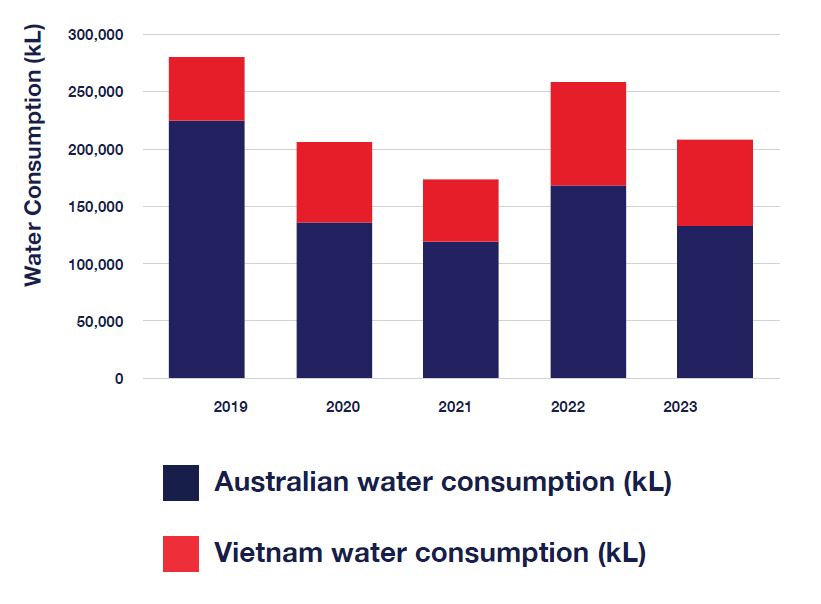
Melbourne Water and the local water retailers supply water to all our Australian campuses, they also collect and treat all RMIT wastewater. For more information visit the Melbourne Water website.
RMIT Property Services Group has an Environmental Management System (EMS) formally certified and externally audited against ISO 14001. This provides greater assurance of the processes in place to meet our environmental compliance obligations, with a focus on ‘water conservation and sustainable water management, including harvesting, reuse and water-sensitive design’.
Property Services, through its management systems, has a number of elements in place to manage our water systems and control pollution, including:
Any water leaks or dripping taps can be reported to the Property Services Desk - Phone: 03 9925 2111 Email: propserv.service.desk@rmit.edu.au


RMIT University acknowledges the people of the Woi wurrung and Boon wurrung language groups of the eastern Kulin Nation on whose unceded lands we conduct the business of the University. RMIT University respectfully acknowledges their Ancestors and Elders, past and present. RMIT also acknowledges the Traditional Custodians and their Ancestors of the lands and waters across Australia where we conduct our business - Artwork 'Sentient' by Hollie Johnson, Gunaikurnai and Monero Ngarigo.
More information